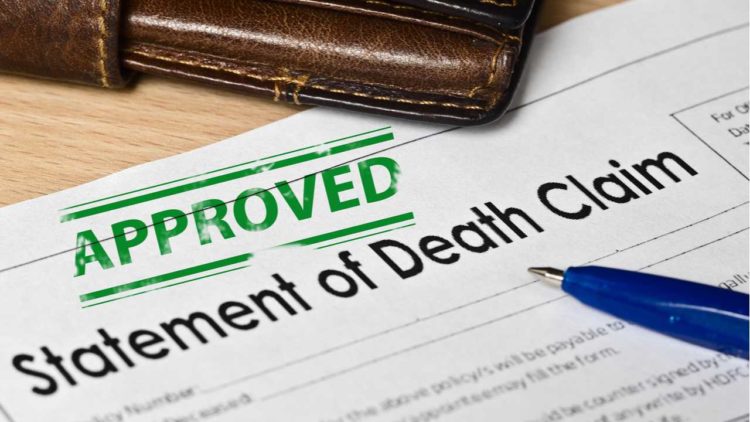How to file a claim request if the insured dies in the hospital?
Every person in the country is going through changes in his/her lifestyle, and the ever-evolving changes in the medical world also make life an individual unpredictable. A health insurance policy is the best tool to protect oneself against increasing medical costs. However, not always life follows the plan, and death may happen. It is during these times; the insurance claim helps the family of the policyholder to return to normalcy.
The death of a loved one is an emotionally draining experience. However, if a family loses the only earning member, the family’s entire financial situation goes for a toss. In many cases, the medical bills account for a significant part of the expenses and are to be settled even if the insured person is no more. There it is essential to know how to claim health insurance to be prepared for any situation that needs your proactive participation.
Claim Eligibility:
The health insurance claim process requires the insured person to be hospitalized for at least 24 hours for the claim request to be taken up by the insurer for processing. Therefore, the claim initiated from your end will not be admissible if the policyholder was admitted for less than 24 hours during the death. In case the person’s death happens after 24 hours of hospital admission, the medical expenses are payable by the insurer as per terms and conditions.
There are two types of medical insurance claims that you can choose to file for claims after the insured person dies in the hospital. They are – Cashless Claims and Reimbursement Claims. We take you through each process to gain a better understanding of the claim procedure.
1. Cashless Claim: This is one of the most opted options in settling the insured’s medical expenses, wherein no payment is required to be paid at the hospital at the time of admission. The insurer shall settle the costs directly with the hospital after the end of treatment. If you intend to utilize the cashless claim facility of the health insurance policy while getting admitted to the hospital, the following steps are to be followed.
- Get admitted to a hospital that features in the insurer’s network list as it facilitates faster health insurance claim processing. Going to a non-network hospital will not provide you with the option of cashless claims.
- Inform about the insured person’s death to the third-party administrator (TPA) or at the insurance desk of the hospital, where you may have provided the cashless health membership number or ID at the time of admission.
- Fill the cashless claim request form that is available on the insurer’s website, along with the necessary documents or reports of the insured.
- On verifying the details, the same shall be forwarded to the insurance company for approval. After getting approval from the insurer, the hospital shall initiate the payment settlement from the company directly. Since the hospital has all the necessary documents related to the insured person, the cashless claim process gets over fast.
2. Reimbursement Claim: The reimbursement claim process is a little different from the cashless process, where the insurer settles the medical expenses after the person’s discharge. Even if the person passes away, the nominee or family member can file for reimbursement claim with essential documents to the TPA, who may send an intimation letter to the insurance company for mediclaim after verifying all the details. This process of claiming the insurance’s medical expenses after treatment at any hospital is called a reimbursement claim.
Generally, a reimbursement claim is filed when the treatment for a policyholder is arranged in a non-network hospital. However, in case the insured person died in a non-network hospital, the following steps are to be taken as part of the reimbursement claim process:
- Pay for the expenses incurred at the hospital, including hospitalization, pharmacy, and treatment costs.
- Remember to collect all the bills from the hospital related to expenses, prescriptions, discharge summary, medical reports, and any other supporting documents from the hospital related to the treatment.
- Contact the third party administrator (TPA) or insurer within seven to fifteen days of discharge, with details of the policyholder, member id, code, hospitalized date, treatment details, etc.,
- Submit the filled reimbursement claim form with required documents such as insurance claim letters for reimbursement, hospital bills, death certificates, etc.
Documents required for the health insurance claim
The health insurance claim process is usually smooth and hassle-free if you can provide all the required documents to the TPA within the specified period. Here is the list of documents as are necessary for mediclaim reimbursement that the insured person or nominee should submit to the hospital to start with the cashless or reimbursement claim procedures:
- Filled-in and signed claim pre-authorization form
- All the necessary KYC documents (Aadhar Card, PAN Card, etc.)
- A prescription from the doctor advising for medical tests, hospitalization, treatment, medicines, etc.,
- Bills from the pharmacy (in original, if available)
- Copy of the FIR (if applicable)
- Original Policy documents/ cashless health card
- Medical reports or diagnostic test reports with explicit mention of the medical condition and hospitalization.
To keep yourself also in the loop, you must maintain an additional copy of the above documents until the entire claim settlement process is completed.
With the mainstream use of the internet, filing claims has become more accessible than ever before for those looking for answers on how to file a health insurance claim. You may file a claim request through the official website of the insurer or TPA or through their mobile apps, which can be accessed from the comfort of your home at any time. You will just need to take a photo of the documents and follow the guidelines mentioned on their portal to upload them. On successful online submission, you will receive an acknowledgment of claim initiation, which you may preserve for tracking the claim.




























